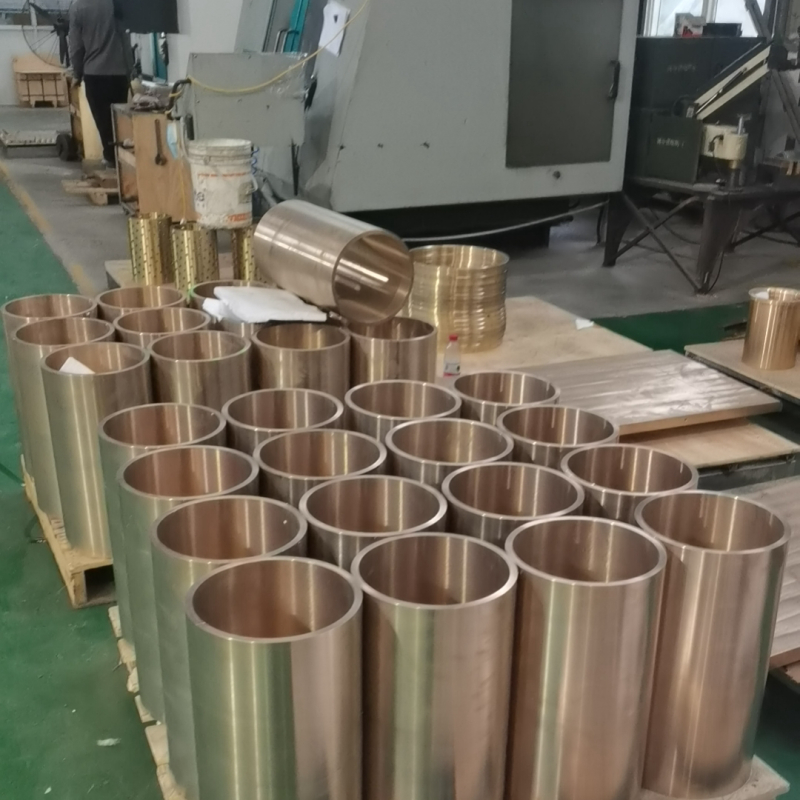 Mazhuang Village, Yuhe Town, Huixian City, Xinxiang City, Henan Province, China
Mazhuang Village, Yuhe Town, Huixian City, Xinxiang City, Henan Province, China
 Service Hotline +86 17630258963
Service Hotline +86 17630258963  Cell phone +86 17630258963
Cell phone +86 17630258963 The working pressure and temperature range of copper bushings are closely related to the manufacturing materials, as follows:
Pure copper:
Pure copper has good electrical conductivity, thermal conductivity and ductility. However, the strength of pure copper is relatively low, easy to deform at higher pressures.
The operating temperature range of pure copper is generally narrow. At high temperatures, pure copper tends to soften and its strength decreases, and its maximum working temperature is usually between 100°C and 200°C. At low temperatures, pure copper has good electrical conductivity, thermal conductivity and ductility. And at low temperatures, the toughness of pure copper increases, but if the temperature is too low, brittle fracture may also occur.
Brass:
Brass is a copper-zinc alloy with high strength and good corrosion resistance. Brass is stronger than pure copper and is capable of withstanding certain working pressures.
Brass has a relatively wide range of operating temperatures. The maximum working temperature of ordinary brass can reach about 200℃ to 300℃. At low temperatures, the performance of brass is also relatively stable and not easy to brittle fracture.
Bronze:
Bronze is a general term for copper-tin alloys or copper-aluminum alloys. Bronze has high strength, hardness and wear resistance. Different types of bronze perform differently in terms of working pressure, but in general, bronze is able to withstand higher pressures.
Bronze also has a wide range of operating temperatures. Tin bronze, for example, can reach a maximum working temperature of about 300°C to 400°C. It can also be used at low temperatures. Bronze also performs well at low temperatures.
White Bronze:
White bronze is a copper-nickel alloy with good corrosion resistance and high strength. Bronze performs better at working pressures and can withstand higher pressures.
White copper also has a wider operating temperature range. Generally speaking, the maximum working temperature of white copper can reach about 400℃ to 500℃. At low temperatures, the performance of copper is stable and not easy to brittle fracture.

The influence of impurities:
Impurities in copper materials can adversely affect their performance. For example, iron, lead, bismuth and other impurities will reduce copper's electrical conductivity, thermal conductivity and corrosion resistance, but also affects the working pressure and temperature range of copper bushings.
High levels of impurities may cause copper bushings to soften more easily at high temperatures, lowering their maximum operating temperature. At high pressures, impurities may also cause stress concentrations, reducing the strength and pressure resistance of copper bushings.
Effect of added elements:
In order to improve the performance of copper materials, some elements can be added. For example, the addition of tin, aluminum, manganese and other elements can improve the strength and hardness of copper; the addition of nickel can improve the corrosion resistance of copper; the addition of phosphorus can improve the fluidity and casting performance of copper.
These added elements will change the working pressure and temperature range of bronze bushings. For example, the addition of tin bronze at high temperatures will increase the strength and hardness, thus expanding its operating temperature range. Nickel-added white bronze will also improve its working pressure and temperature range in corrosive environments.
In summary, the working pressure and temperature range of copper bushings is closely related to the manufacturing materials. Different copper materials have different properties, and impurities and added elements can also have an impact on their performance. When selecting copper bushing materials, it is necessary to consider the strength, corrosion resistance, electrical conductivity, thermal conductivity and other factors of the material according to the specific working pressure and temperature requirements, in order to ensure that the copper bushing can operate normally under specific working conditions.
